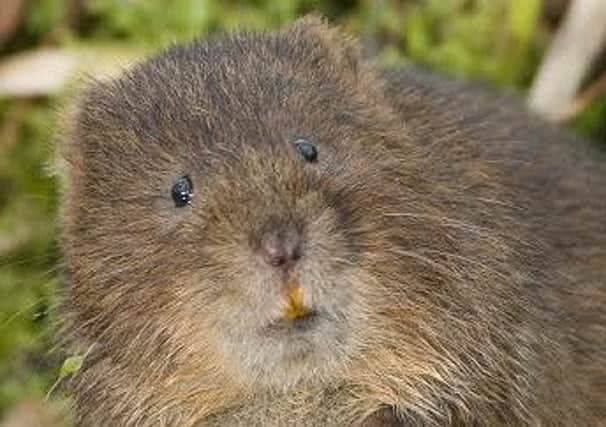Terrible plight of endangered vole
This article contains affiliate links. We may earn a small commission on items purchased through this article, but that does not affect our editorial judgement.


The tiny riverside resident was the inspiration for ‘Ratty’ in Kenneth Graham’s charming Wind in the Willows book.
Water voles were once a common sight along UK riverbanks and waterways, but over the last century they have experienced the most severe decline of any wild mammal in the UK.
Advertisement
Hide AdAdvertisement
Hide AdThe decline in water vole populations has been attributed to the intensification of agriculture in the 1940s and 50s, and more recently the release of non-native American mink during the 1980s and 90s. The impact of mink has been devastating: between 1989-1998 the water vole population crashed by almost 90%.
Romney Marsh is a rare stronghold for the tiny mammal but even there numbers are falling.
Last year, People’s Trust for Endangered Species launched the first ever National Water Vole Monitoring Programme.
After a successful initial year, the Trust is hoping to build on this citizen science project with a call for more volunteers to participate this May.
Advertisement
Hide AdAdvertisement
Hide AdThe survey provides an essential resource in efforts to conserve the species.
The first year of the national survey saw 188 waterway sites surveyed by volunteers, of which 68 indicated water voles were present.
While this is a great start, The People’s Trust for Endangered Species is still looking for more volunteers to help survey sites across the UK, to ensure all regions have a sufficient number of sites being surveyed.
Once a site is surveyed the data are submitted online, allowing the Trust to develop a wider picture of how UK water voles are faring, and of which populations are in most need of help.
Advertisement
Hide AdAdvertisement
Hide AdThis spring, it is asking existing water vole monitors, and new recruits, to take part in the 2016 survey.
Volunteers are required to survey one of the nearly 900 pre-selected sites across England, Wales and Scotland, and record all sightings and signs of water voles along a 500m length of riverbank during May.
While no experience is required, those taking part will need to learn how to identify water vole field signs.
Emily Thomas, who coordinates the project, says: “We are delighted by the response to our first National Water Vole Monitoring Programme.
Advertisement
Hide AdAdvertisement
Hide Ad“With the help of volunteers we have started building a robust dataset that can be used to monitor year on year trends in the water vole population.
“The data gathered so far are invaluable, but more still needs to be done if we are to be in a position to act quickly to future changes and make a real impact to water vole conservation.”
As well as being preyed on by non-native American Mink, there are many other threats to the tiny mammal.
These include loss and fragmentation of habitats - particularly through inappropriate management and agricultural intensification such as re-profiling, heavy grazing, drainage, vegetation control and extensive bankside tree-planting; pollution of watercourses and poisoning by rodenticides; persecution - sometimes in the mistaken belief that water voles are rats and severe winters and droughts which lead to significant water level fluctuations.
Advertisement
Hide AdAdvertisement
Hide AdThe Trust is a UK conservation charity created in 1977, is ensuring a future for endangered species throughout the world. They protect some of our most threatened wildlife species and habitats, and provide practical conservation support through research, grant-aid, educational programmes, wildlife surveys, publications and public events. To take part visit: www.ptes.org/watervoles.
Don’t miss out on all the latest breaking news where you live.
Here are four ways you can be sure you’ll be amongst the first to know what’s going on.
1 Make our website your homepage at www.hastingsobserver.co.uk
Advertisement
Hide AdAdvertisement
Hide Ad2 Like our Facebook page at www.facebook.com/hastingsobserver
3 Follow us on Twitter @HastingsObs
4 Register with us by clicking on ‘sign in’ (top right corner). You can then receive our daily newsletter AND add your point of view to stories that you read here.
And do share with your family and friends - so they don’t miss out!
The Hastings Observer - always the first with your local news.
Be part of it.